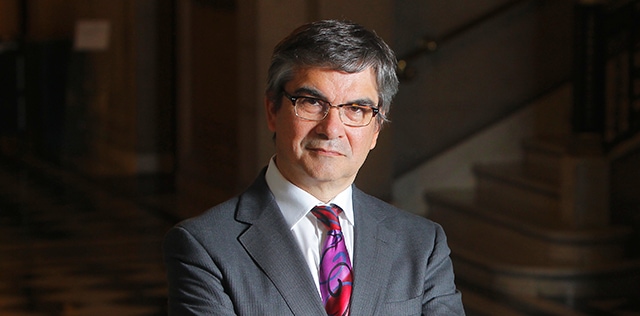Governor ofthe Central Bank of Chile, Mario Marcel Cullell speaks about the country's growth prospects and how flexible foreign exchange can act as a shock absorber.

Global Finance: Judging from the first part of 2018, Chile’s GDP seems to be expanding at the highest rate in five years. What are your expectations for this year and next?
Mario Marcel Cullell: The latest quarterly GDP figures, released on August 20, indicate that the Chilean economy grew 5.3% year-on-year, led by gross fixed capital investment and exports. This is the fifth quarter of successive accelerating growth, and the highest since 2012. The latest Central Bank of Chile estimates for annual growth are between 3.25% and 4.25% for 2018 and 2019, respectively. Inflation is currently below 3%.
While copper makes a substantial share of Chile’s exports—roughly 50%—macro vulnerability to terms of trade has been substantially reduced by a combination of monetary, fiscal and foreign exchange policies that have been in place for nearly 18 years. In particular, a fully flexible exchange-rate regime allows the local currency to cushion external shocks, while a forward inflation-targeting regime allows monetary policy to operate in a countercyclical way. A fiscal-policy framework based on a structural-balance measure, whereby spending is planned on cyclically and copper price–adjusted terms, allows budget stabilizers to operate. More specifically, the flexible exchange-rate regime can act as a shock absorber, without the financial stability concerns that plague other emerging economies, due to the appropriate supervision of financial institutions’ FX exposures, as well as a deep market for hedging FX positions in the corporate sector.
GF: What do you see for Latin America through the rest of the year and into 2019?
Marcel: In line with market revisions, we see a downward correction for the year, due to the important adjustment undertaken by Argentina and the slowdown in Brazil. At the same time, markets seem to be able to recognize countries with stronger fundamentals—like Colombia, Peru and Chile—in the face of heightened uncertainty.
GF: What keeps you up at night? What are the major risks in the current economic cycle at a global level?
Marcel: External conditions so far remain supportive, with the world economy expected to grow above average this year and next, and major central banks keeping an accommodative stance. Internal conditions are also positive, with an upward phase of the domestic business cycle led by investment, exports and consumption. The Chilean economy does not face any major macro bottlenecks that may frustrate this recovery. Still, external risks have turned to the downside and we should be prepared to respond appropriately to a more challenging scenario.
In particular, we are concerned about:
- An intensification of trade disputes, particularly those involving the US and China, both of which are major trade partners to us;
- Increased inflationary pressures in the US and a consequently faster pace of Fed hikes;
- A further retreat in market sentiment toward emerging-market economies, which may be triggered by any of the previous two factors
Still, the central bank is well prepared to face new challenges. Even with some pass-through from the exchange rate (currently at 15%, one of the lowest in the region), we have substantial room to maneuver. The current framework allows monetary policy to target medium-term inflation forecasts—headline CPI two years ahead—rather than short-term inflation dynamics, allowing significant flexibility for accommodating external shocks. This is further supported by well-anchored expectations, based on the credibility gained by the central bank after nearly 30 years of independence. This is important, since external shocks may be inflationary in the short run due to currency depreciation, but contractionary for the medium-term growth and inflation outlook. The implications of such a scenario for monetary policy are therefore nuanced, given the short- and medium-term inflation trade-offs implied, and would be monitored very closely by the central bank´s board in order to calibrate the appropriate policy response.



